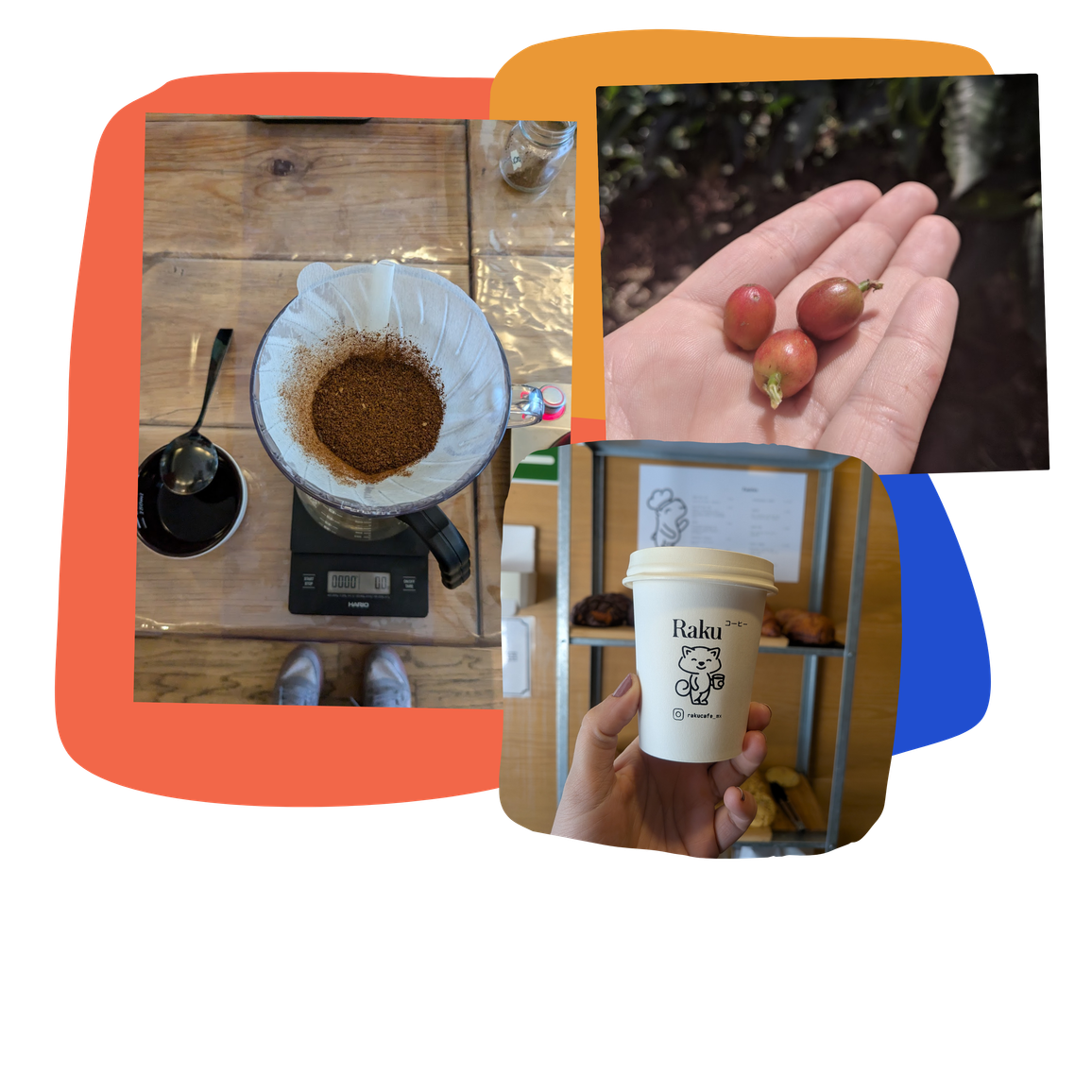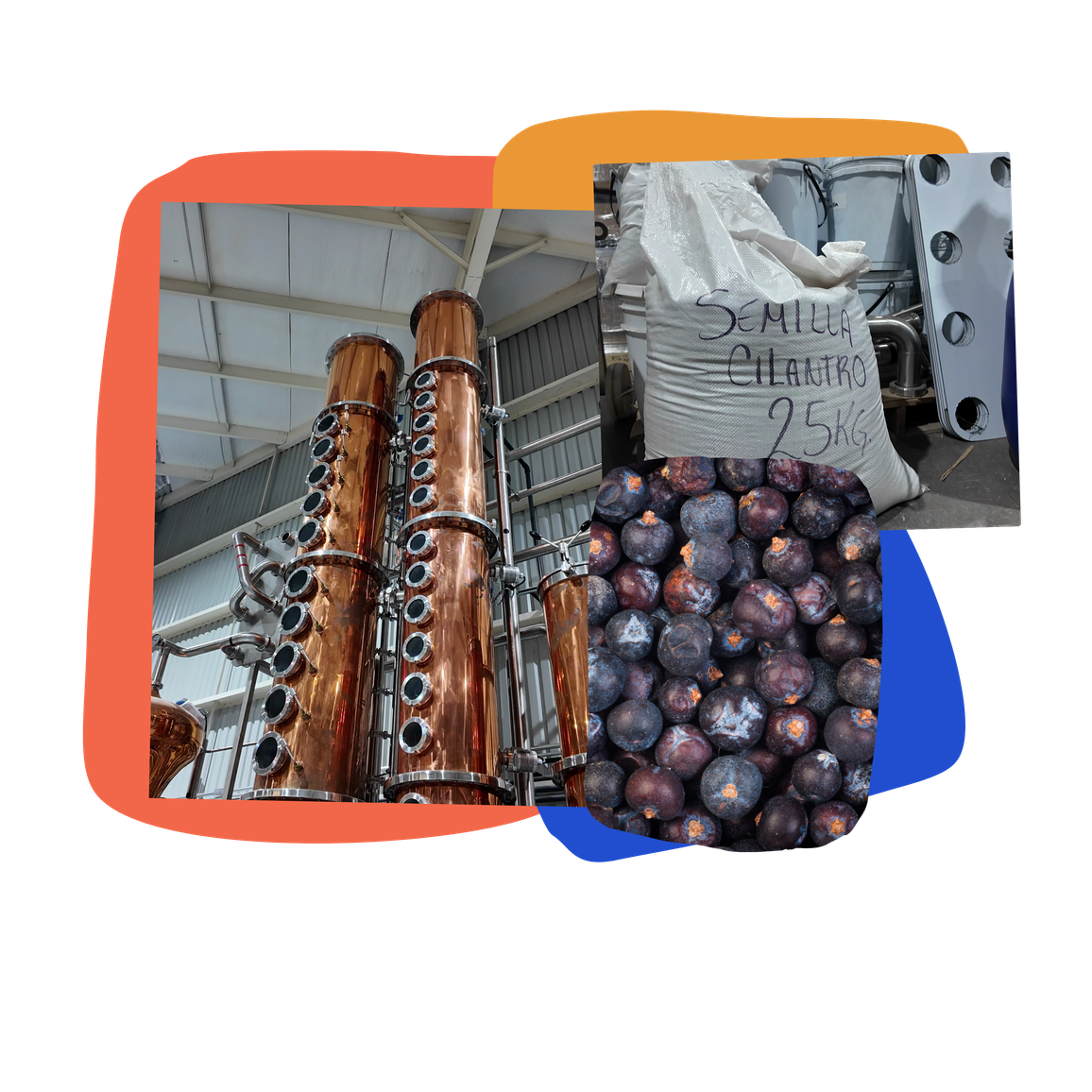Mexican Craft Beer
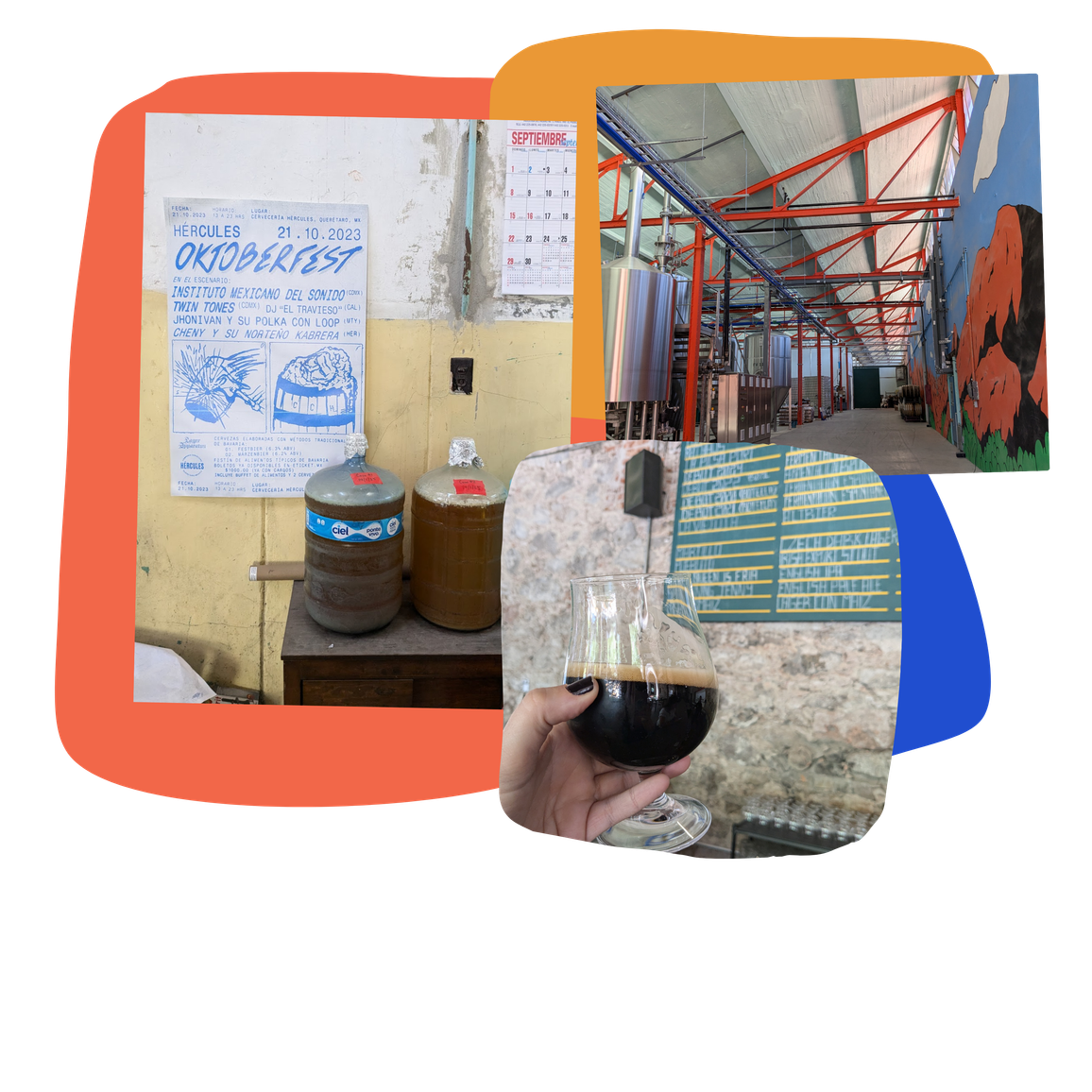
Mexican Craft Beer
Mexico exports more beer than any other country, but all the well-known brands are owned by two foreign companies. Luckily, a few hundred craft breweries are working to change that!
Listen to this episode to hear about:
- Why it’s so hard to make craft beer in Mexico, and why people do it anyway
- What people mean when they call something a “Mexican lager”
- How one family turned the biggest textile factory in Latin America into a brewery with the most beautiful beer garden I’ve ever seen
- And why beer is responsible for all of human civilization (seriously)
Subscribe
Subscribe to the show in your favorite podcast player to make sure you never miss an episode!
And maybe leave a rating and review while you're there? 🙏
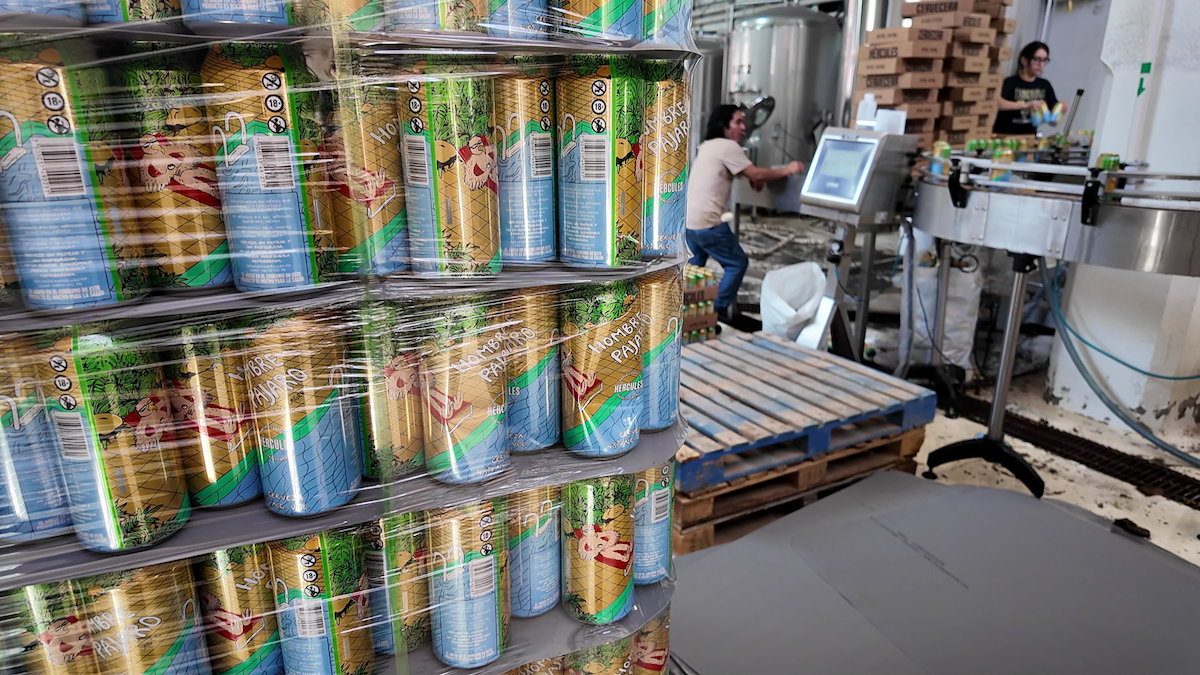
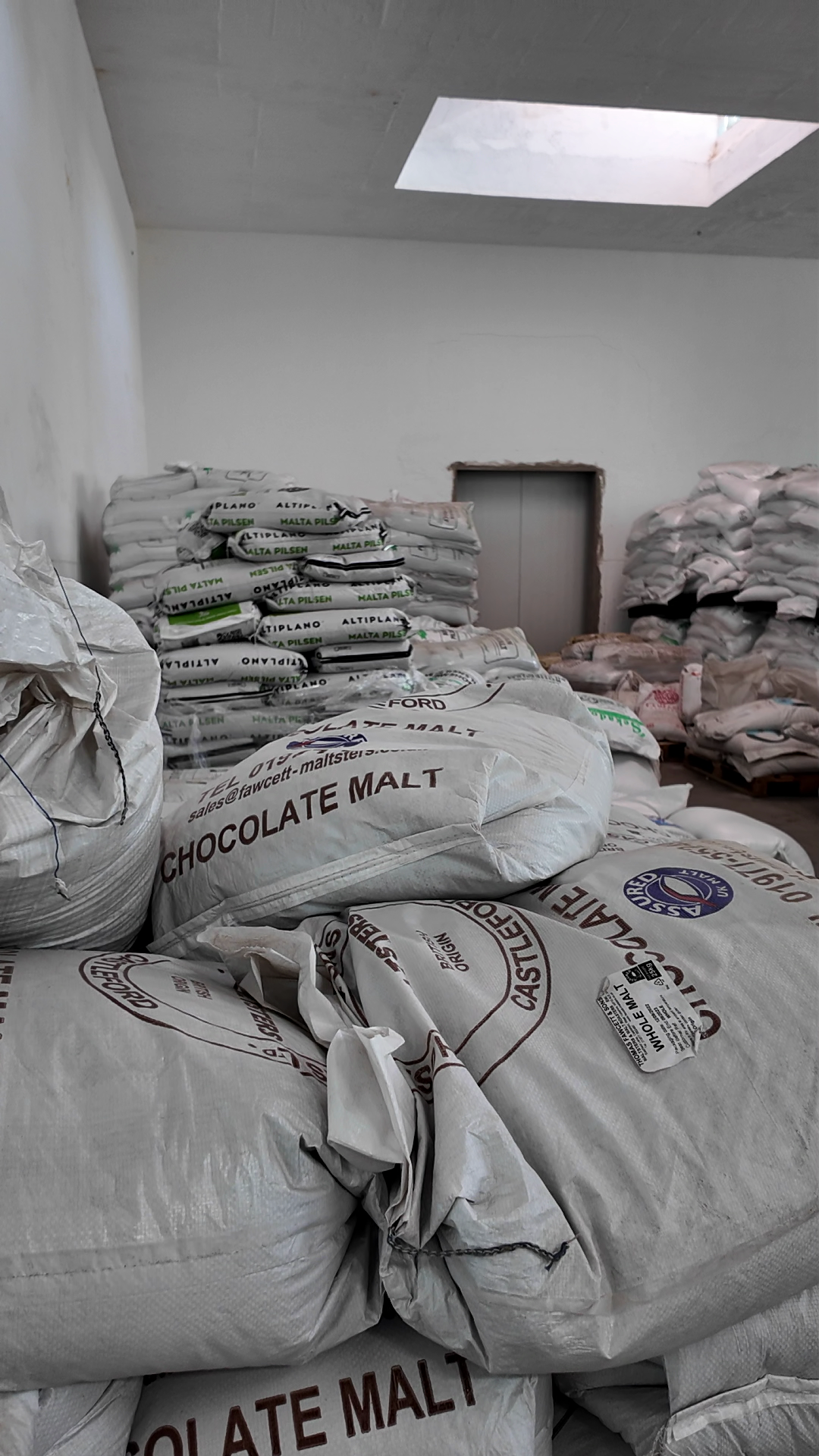
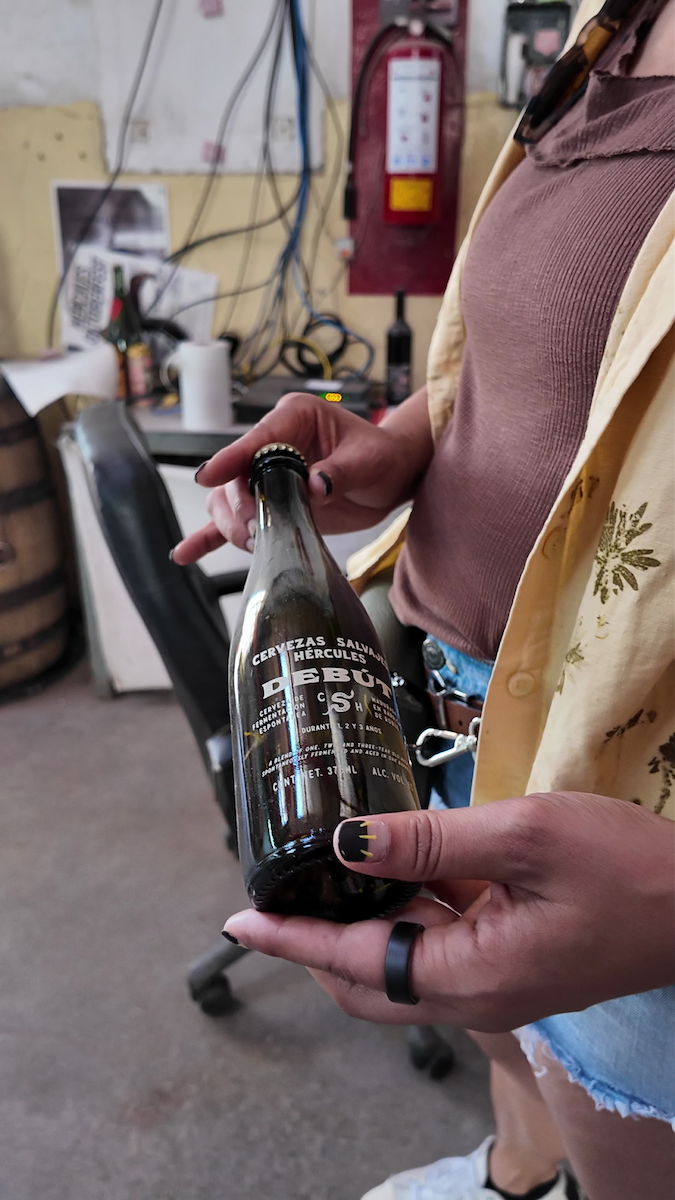
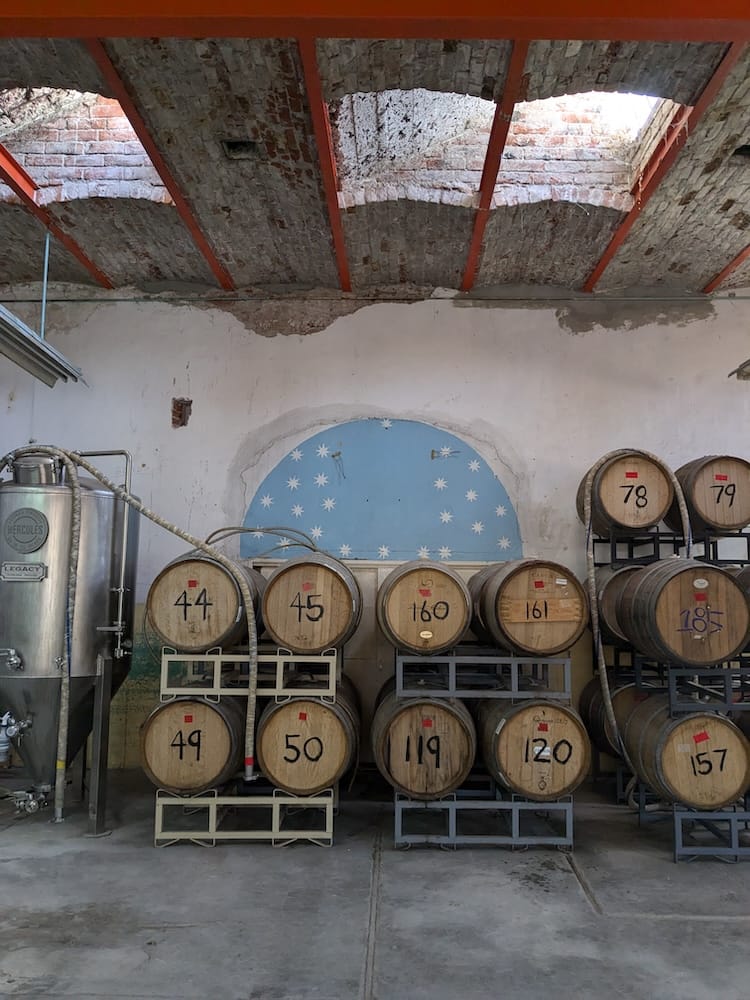
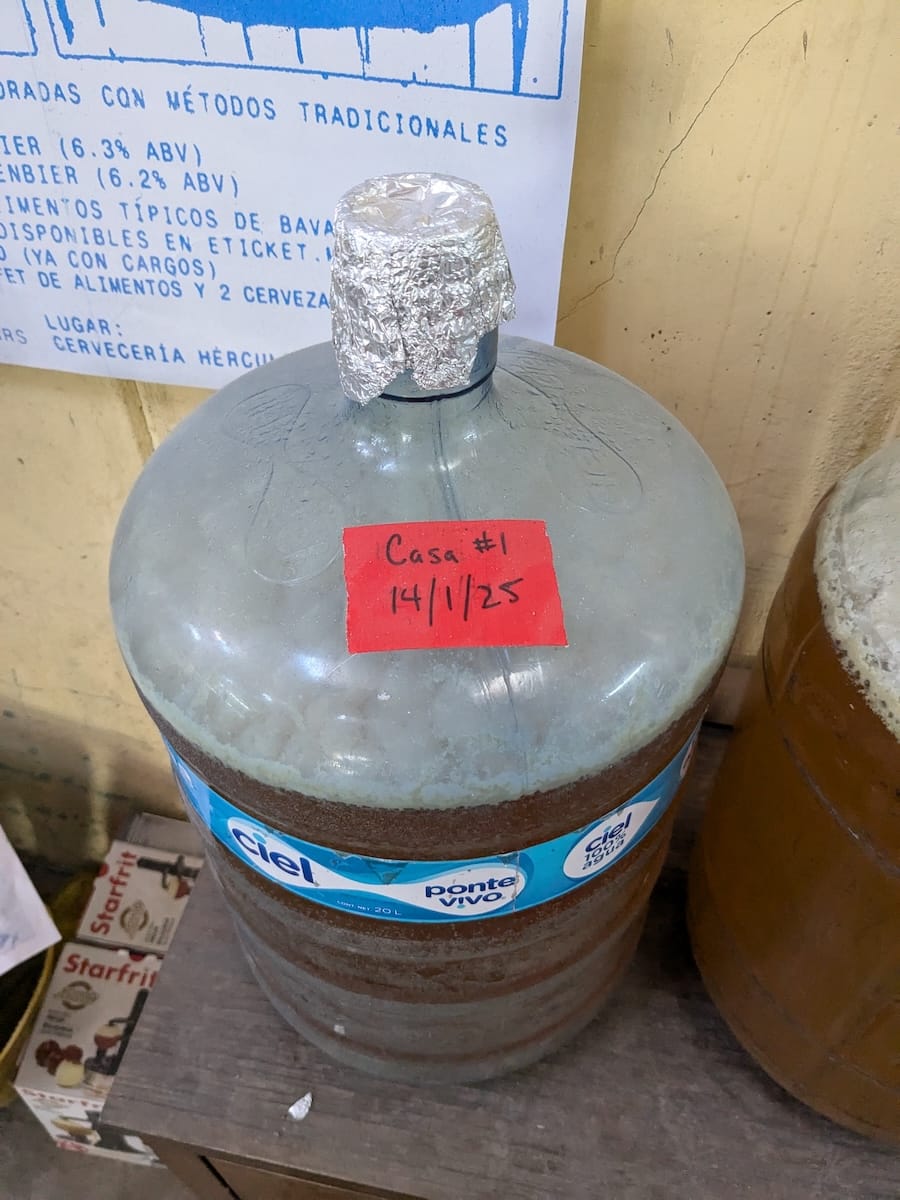
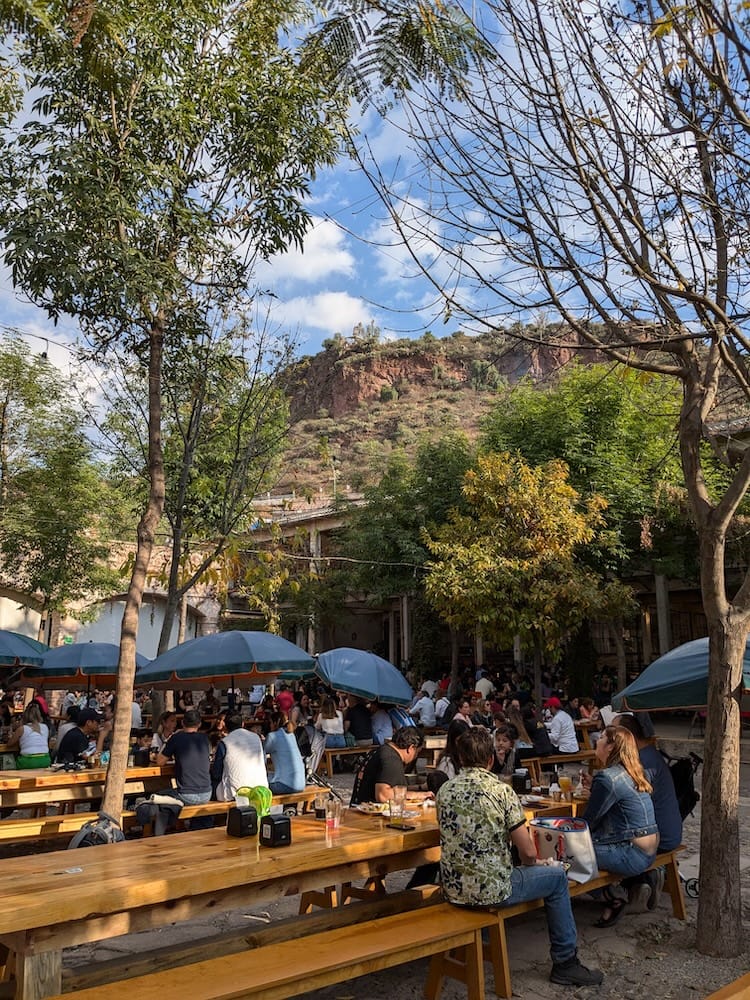
© 2025 Between Drinks
More from this episode
Transcript
Show Intro (0:00)
Welcome to Between Drinks, a podcast where we travel the world one drink at a time.
I’m your host, Caro Griffin, a mezcal sommelier, traveling bartender, and all-around drinks nerd.
In each episode, I’ll take you somewhere new to dive into a local drink with a story to tell. We’ll talk about its history and how it’s made, but also its connection to the place and the people that make it what it is.
There’s a great story behind every great drink, and I can’t wait to share them with you. Thanks for listening.
Episode Intro (00:22)
Today, we’re lightening things up with a nice, cold, refreshing beer.
No matter where you live, I bet you can rattle off a few Mexican beer brands: Corona, Modelo, Pacifico… maybe Tecate, Victoria, Dos Equis…
Brands like these have helped make Mexico the biggest beer exporter in the world.
It’s an industry that has doubled in size over the last ten years, and it’s now worth 18 billion dollars.
Beer is big business in Mexico, and also a big part of its perception abroad. After all, when you picture yourself on a beach in Mexico with a cold drink in hand… that drink is probably a Corona.
But what if I told you all six of the brands I just named were owned by just two companies? That they account for more than 90% of the Mexican beer market? And that neither of them is Mexican-owned?
Well, those are all facts. Which begs the question: what even IS a Mexican beer?
Mexican-Style Beers (01:18)
Now, there’s an obvious answer to that question… or maybe even two.
You could classify any beer made here as a Mexican beer, technically. But also, “Mexican-style beer” is a common turn of phrase with a clear meaning for beer fans.
A Mexican-style beer is a pale lager… known for being light, crisp, and refreshing.
It’s rooted in European brewing traditions, but usually a bit sweeter due to the (very Mexican) addition of corn. (I swear to god, if there was a tagline for this season, it would be: Just add corn.)
Anyway, the lagers put out by brands like Pacifico and Modelo are classic examples of that “Mexican-style beer.”
And, look, all those beers are crushable as fuck. But they’re not exactly interesting. And we’re here for the interesting stuff, the drinks we stan for, the ones that really exemplify Mexico.
And, for me, that’s Mexican craft beer.
The craft brewers I’ve met are passionate, creative, and stubborn as hell.
They have a clear vision that they are determined to make a reality despite overwhelming odds.
And if that’s not Mexican, I don’t know what it is.
Mexican Craft Beers (2:28)
Josh: I hope the consumers out there try to support them because it is not an easy thing to make a 12-ounce or a 355-milliliter bottle or can of beer as a craft brewer in Mexico, and keep that thing under 50 pesos. It's very difficult.
That was Josh Brengel, head brewer at Cerveceria Hercules, talking about how hard it is to make affordable craft beer in Mexico.
Making craft beer in Mexico is like trying to start an outdoor pool business in the middle of a desert.
You're going to have to import everything. It's going to be hard and expensive. People are going to be confused. And it probably won't work long-term, no matter what you do. And yet people do it!
Mexico has over a thousand craft brewers… but they produce less than 1% of Mexican beer. (For context, craft beer makes up 13% of beer made in the US.)
Starting a brewery is hard everywhere, but doing it in the face of what is essentially a duopoly… just makes it all the harder.
And then Mexico itself poses some extra challenges—you have to import nearly all the raw ingredients, the taxes are high, water is hard to come by... the list goes on.
And yet, people do it! And they do it well. Despite all the reasons not to.
History of Beer (03:36)
Now, you know by now that I have to kick us off with some history before I get to the good stuff. Because this is good stuff too!
For example, did you know that beer basically deserves the credit for like… human civilization in general?
I know that sounds wild, but here me out!
Humans have been making beer for 12,000 years. And many historians argue that beer was what made us stop being nomads (who hunted and gathered) and start being farmers (who settled in one place).
Beer production required people to tend to crops and build places to store the grains. After they did all that work, they obviously wanted to stay close by. This led to villages and, eventually, cities. It also gave us food surpluses, which freed some people up to specialize in trades.
In those very early days, beer was money, and thus part of the reason we had to invent writing, and accounting, and bureaucracy.
The workers who built the pyramids were even paid in beer!
So, I guess what I’m saying is this:
Beer is more than just a cheap frat boy beverage and it deserves the respect that wine and spirits get.
And, also, the next time a friend pays you in beer to help them move, you should maybe be grateful that it’s easier to move their couch than build a pyramid… and count yourself lucky.
Now, beer back in the day was very different from what it is now.
It had a much lower alcohol content, for starters.
It was drunk through a straw because there was so much floating debris in it. (Gross!) And it had more protein and vitamins
Beer was safer to drink than water, which often had literal shit in it, and so people of all ages drank it. Even little kids!
It also didn’t have all the crazy flavors we have today, or even hops, which weren’t added until the Middle Ages.
Hercules’ Backstory (05:14)
Josh: If the listeners ever make it out to Queretaro, you know, we have a hotel, we have a 1,200-person beer garden, we have a dance hall, and then we also have outside of that whole compound, where we make the beer, you know, which is Hercules, in the neighborhood of Hercules. We also have a downtown Queretaro location, we have another one in South Central Queretaro…
Cervecería Hercules is a brewery based in Querétaro.
You might recognize the name Querétaro from our earlier episodes on Mexican whiskey and gin. The Juan del Campo and Acronimo distilleries are practically right down the street from Hercules!
Querétaro is a mid-sized city in central Mexico that, despite having a population under 2 million, has an outsized craft beer and spirits industry. And the beer part is arguably due to Cervecería Hércules.
The name Hércules comes from its neighborhood, which sprang up in the 1850s around a textile factory of the same name. At its peak, the plant had 8,000 employees and was one of the biggest textile factories in Latin America.
Fast forward a hundred years—globalization happens, the textile business moves to Asia, production starts shrinking, and a member of the family starts a brewery.
Fast forward another decade—the textile factory has closed, Hércules has taken over the whole space, added a beautiful boutique hotel, a place for concerts, and the biggest, most beautiful beer garden I've ever seen.
They've helped keep their vibrant, working-class neighborhood alive. And they've done it while making damn good beer.
Market Challenges (06:30)
Josh: When I was growing up in the US, in Florida, maybe we had Bud, Miller, Coors, and maybe occasionally you see a Sam Adams or occasionally a Sierra Nevada Pale Ale way back in the day. Eventually, that got better. But here in Mexico, you… I would say the beer options were always a little more.
You have these two mega brands kind of over the last twenty years… they all make dark beers, amber beers, light beers, so, at least on the color spectrum, you’re not as starved as I may have been as a teenager trying to get into beer. I think here… you go, “Okay, that’s passable. I can drink that.”
That’s Josh again, talking about how the big brands in Mexico, or macro brewers as they’re often called, are… actually pretty good. Or, at least, they’re way better than the equivalent big brands in the US.
I don’t consider myself a beer nerd, per se. But you still won’t catch me drinking a Bud Light or Miller Light at a dive bar in the US. (I’d honestly rather order a soda water.)
And yet, I do occasionally order a Modelo there… and here, and wherever it’s on offer. And I enjoy it when I do!
This distinction is important because the quality of Mexico’s macro brewers is a good thing for beer drinkers, and a not-great thing for craft brewers.
Craft beer is expensive to make, and so it naturally costs more to buy. (It’s usually 2-3x more, in my experience.)
It’s easier for me to justify paying that 2-3x more for a craft beer when the alternative is Bud Light. But when it’s a Modelo? Ehhh, I’ll probably still do it if the craft beer sounds good, but a lot of people won’t.
Especially here in Mexico, where people are very used to beer costing less than 50 pesos.
Freshness in Beer (08:15)
Caro
Tell me about what it means to be a fresh beer.
Josh
Yeah, I think it's like just if you eat bread or you eat other fermented products… You can do tricks in the food science world to make things last a really long time on a shelf.
Now you have supermarkets… they want one year on the package or more.
The most you'll ever see from us is maybe six months, but we hope that the beer is sold way before then. And it's not that the beer is bad for you. You could drink… man, I've tried beers from the 1930s and stuff before.
Caro
Wow, okay…
Josh
Beer is not going to ever go bad or make you sick. That's part of the reason it's been such a part of our existence as humans, and our experience, because it can last a long time.
Nowadays, beer is just a commodity and you can buy it and just leave it in the pantry or whatever for a few weeks, or a few months, or whatever, and it probably still tastes… pretty much the same. And with pasteurized beer, you can accomplish that.
But yeah, when you're pasteurizing, you're also, you know, killing whatever residual yeast could be in the package. Yeast is very… especially if you're drinking, it's great for your health. It helps with digestion. It helps with everything. It's a probiotic.
So, I think keeping that in the beer and not filtering it out and, and pasteurizing it and killing it… Yeah, you have some better flavor stability to sell that beer over the course of a year or two, but you just lost all the health benefits of the beer also so…
Caro
Yeah, I mean, I didn't personally know there were health benefits to beer, so yeah, I would like those.
Josh
I don't drink beer for health benefits.
Caro
I mean, I don't either, but I'll take them if I can get them. [Both laugh]
Josh
Yeah, exactly. I mean, I think, that's something we've always known.
If you drink alembic, it tastes like kombucha because it's full of the same bacteria as in wild yeast. That’s just one thing. That's a small part of our production is those types of beers… but I think anytime you can have a fresh beer… man, less hangover.
Like, if I go out and I drink industrial beer all night, I wake up not feeling the same, as if I drink a nicely crafted beer, I’d say.
“Fresh beer” is a concept that might sound odd to all but the beer nerds among us. And that’s because it isn’t super common outside of Western Europe.
In countries like Germany, Czechia, Austria, and Belgium, there’s a long-running tradition of brewing and consuming local beer. And, as a result, beer drinkers are more likely to have an appreciation (almost expectation) that their beer is extremely fresh, unpasteurized, or minimally processed. Which is really what we’re talking about when we say, “fresh beer.”
But let’s talk about how beer is made in general…
How Beer is Made (11:25)
Beer is made by fermenting cereal grains like malted barley.
At a high level, this is how it works:
- You take malted barley and mash it into what is almost a powder. (You can use other grains too, but malted barley is almost always the base of modern beer, even if brewers also add things like wheat, corn, or rye.)
- You add hot water to activate the enzymes inside the malted barley and convert them into sugars. (Fun fact: The enzymes that brewers are after here are the same ones in your mouth when you break down food.)
- Once that’s done, you filter out all the solids so you’re left with a hot, sugary, barley-flavored water that’s referred to as the wort. (Wort is spelled W-O-R-T, btw. It’s a German word.)
- You boil the wort to sanitize it.
- And then you add hops. Different hops have different compounds and oils, so you can get different results depending on what kind you use, when you put them in, things like that, but generally, the longer they’re in there, the more bitter the beer will be.
- Finally, the boiled wort is put into a fermentation tank with whatever yeast the brewer has chosen.
Lambic-Style Beers (12:34)
Josh: Yeast are microorganisms. Every one of them has a different characteristic. They're like animals, so they all behave a little bit differently, and some of them are like cats, some of them are like dogs, and some of them are just completely wild animals. It depends on what we're doing and what we're using.
Yeast need oxygen, they need aeration also, so all this time and temperature, pH, it all comes into the final product, into the flavor, but also setting up that environment for the yeast because the same yeast might act totally different if you change up these parameters.
So, the density, the original density, the bitterness, all this stuff is something that will contribute to the final product…
Hercules mostly makes what Josh refers to as “beer-flavored beers.” Which is a description I love.
We’re talking lagers, ales… and a whole bunch of sub-styles within those big categories.
But I also want to touch on Hercules’ less run-of-the-mill beers, the most experimental of which is a line of Lambic-style beers.
“Lambic beers” are made in Belgium using wild yeast and spontaneous fermentation. So, instead of using a carefully cultivated strain of brewer’s yeast, the brewers there allow the naturally occurring wild yeast and bacteria to naturally ferment their beers.
The result is some of the wildest beer you’ll ever taste. In fact, I’d reckon that if you’ve never had one before and someone put a glass in front of you… Unless you’re a beer nerd, you’re probably not even going to identify it as a beer at first.
Lambic (and Lambic-style beers, as they’re called outside of Belgium) are usually very dry, tart, acidic, and sometimes a little vinegary. They more closely resemble a really funky, natural wine than a standard lager or ale.
They are not for everyone because they are, in a word, wild. Which is exactly what Hercules calls its line of Lambic-style beers: Cervezas Salvajes, or Wild Beers.
Now, it’s rare to find the Lambic style outside of Belgium. Some brewers will do one-off experiments, but, as far as I can tell, Hercules is the only craft brewer in Mexico with a like formal, established program… and that’s very ambitious.
Their cervezas salvajes are spontaneously fermented and then aged in oak barrels for 1,2, or 3 years.
So, even once they’re out of the barrel and in the bottle, the flavors will continue to develop. This gives them a sense of ephemera that I really love.
What you taste today is not what you’re going to taste a few months from now, a few years from now, and the supply will only last as long as it lasts.
Respecting Beer (14:59)
This brings me to the third thing that really stands out about Hercules, after the freshness and their willingness to go long on wild experiments… and that’s the way they treat their beer, which is as a craft beverage that deserves its due.
Beer has always been a middle-class drink. And even today, it’s something you drink on a casual night out, on a hot summer day, or at home in front of the TV.
It’s not pretentious, and that’s part of what’s great about it… But it’s rarely given the same due that wine or spirits get.
But when I ordered a Cerveza Salvaje at the brewery’s restaurant in Queretaro, the waiter treated it with a sort of reverence that’s usually reserved for wine.
This is probably in part because it’s a 200-peso bottle of beer, which is around $12 USD. And it has both a bottle cap and cork that does need to be opened somewhat delicately… but it’s also the way Hercules treats beer in general.
Like it’s the product of a craft, and deserving of the same respect that wine and spirits get.
Why I Love Hercules (15:48)
So, let’s recap, shall we?
Hercules makes refreshing “beer flavored beer,” as Josh calls it, plus some wild, lambic-style beers. They’re all great!
But a lot of craft brewers make great beers.
What I love about Hercules, and why I picked them for this episode, is all these other things:
- Their commitment to freshness,
- Their ability to churn out great, classic lagers and ales, while also experimenting with the ambitious and funky stuff,
- The way they give beer its due as a truly craft product
- And, of course, their cool backstory and strong ties to the Hercules neighborhood in Querétaro.
At the end of the day, that’s what this podcast is all about: showcasing good drinks that are what they are because of where they come from. And Hercules is a beer from Hercules and Querétaro.
So, while I love a good beer and a good story, it’s all these things together that make me choose Hercules any time I see them on a menu.
Well, that, and the fact that their Lagermaiz—a lager made with corn, because, of course, it is—is crushable as hell.
(I will not be disclosing how many I had while researching and writing this episode, BTW.)
Wrapping Up (17:06)
Hercules is one of the bigger craft brewers in Mexico, but it’s hard to find it outside of Mexico… Unless you happen to be at the Mexican Pavilion at Epcot. (Lol)
Because Josh spent time as a brewer in Florida, there actually are a handful of places you can get it in the US, but it’s not super common.
But don’t worry - I’ve put together a list of the places you can find it here in Mexico and abroad. Plus, I rounded up some other craft brewers I like that you can also keep an eye out for.
That link is betweendrinks.co/mexicancraftbeer.
And, as always, there’s also some bonus content from my trip to the brewery in Querétaro, so make sure to check that out. It’s truly
And! If you’re new to Between Drinks, I also want to share my newsletter, where I write about the overlap between travel, culture, and drinks.
If you like this podcast, you’ll love the newsletter. It’s like a mini, more casual version of this pod. And it’s where I share a lot of the behind-the-scenes stuff that goes into these episodes—trips to distilleries, off-topic but interesting conversations with brewers and bartenders, and specific recommendations on where to get great drinks in cities around the world.
You can subscribe at that same link: betweendrinks.co/mexicancraftbeer.
Thanks for listening, and I hope to see you for the next episode as we dive further into other Mexican drinks!
Show Notes
Interviews:
- Josh Brengle from Cervecera Hércules
Mentioned:
- Querétaro, Mexico
- Cervecera Hércules (plus, their beer garden and boutique hotel)
Sources:
Where to Buy Mexican Craft Beer
Mexico
Hércules is easy to order online. It's also readily available at their own tap rooms in Querétaro and CDMX, and other spots that serve craft beer.
CDMX:
- Lagerbar Hércules
- Tienda Hércules
- Drunkendog (Condesa, Tlalpan)
- El Grifo
Querétaro:
- Fábrica Hércules (the brewery & beer garden)
- Almacén Hércules
- Barra Hércules
United States
Hércules isn't available in the US... except at Epcot's Mexican Pavilion. (If you listened to the episode, then you already know!)
But here are some other independent craft brewers to look out for:
- Cerveza Rrëy (Monterrey)
- Cerveza Urbana (Mexicali)
- Sierra Madre Brewing Co. (Monterrey)
- Baja Brewing (Los Cabos)
Episode Reviews


